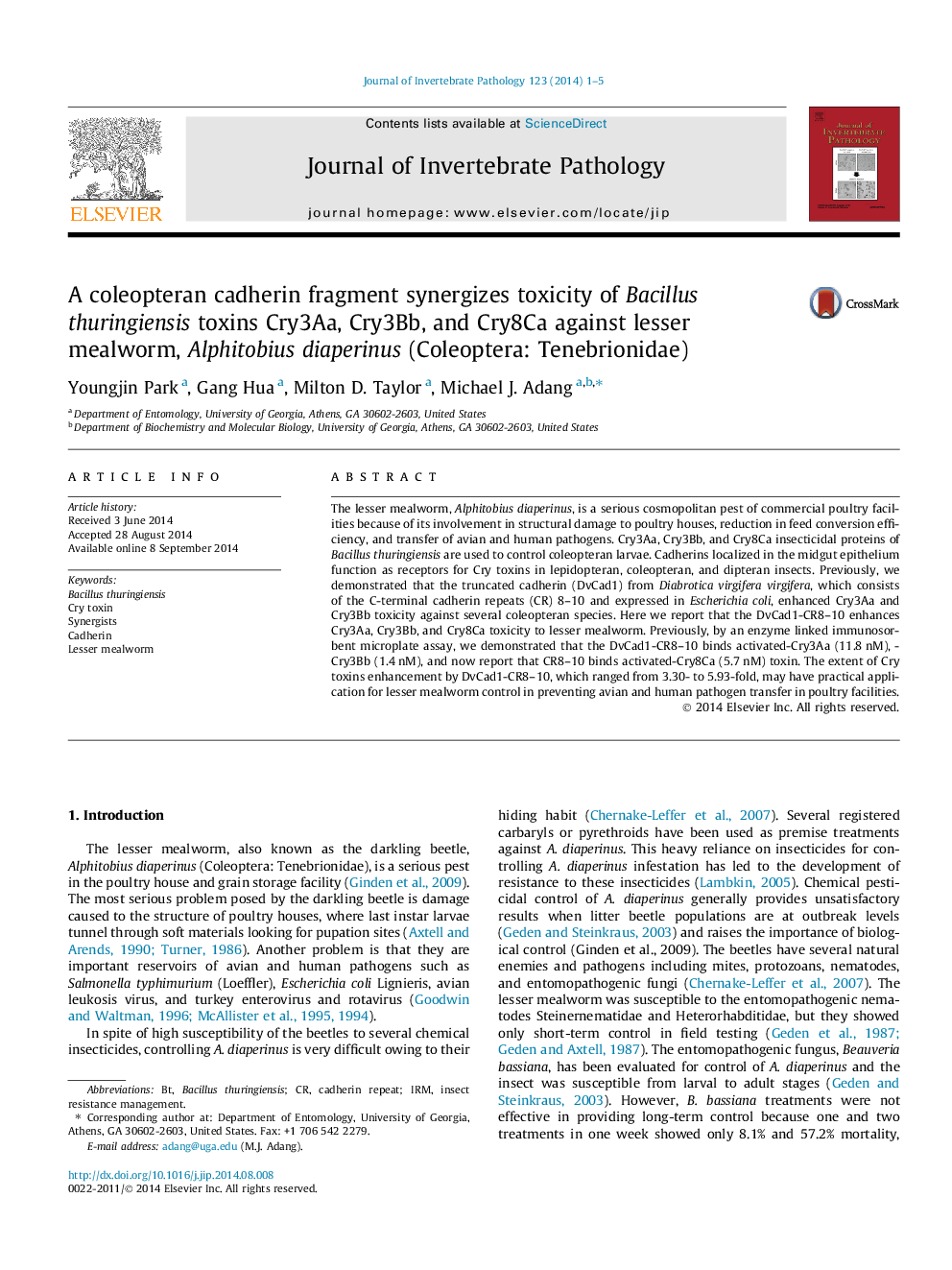| Article ID | Journal | Published Year | Pages | File Type |
|---|---|---|---|---|
| 4557660 | Journal of Invertebrate Pathology | 2014 | 5 Pages |
•Cry8Ca, known for toxicity to white grubs, is toxic to lesser mealworm (Alphitobius diaperinus).•A fragment of rootworm cadherin binds Cry8Ca with high affinity.•The toxin-binding cadherin fragment enhances Cry3Aa, Cry3Bb and Cry8Ca toxicity to lesser mealworm.
The lesser mealworm, Alphitobius diaperinus, is a serious cosmopolitan pest of commercial poultry facilities because of its involvement in structural damage to poultry houses, reduction in feed conversion efficiency, and transfer of avian and human pathogens. Cry3Aa, Cry3Bb, and Cry8Ca insecticidal proteins of Bacillus thuringiensis are used to control coleopteran larvae. Cadherins localized in the midgut epithelium function as receptors for Cry toxins in lepidopteran, coleopteran, and dipteran insects. Previously, we demonstrated that the truncated cadherin (DvCad1) from Diabrotica virgifera virgifera, which consists of the C-terminal cadherin repeats (CR) 8–10 and expressed in Escherichia coli, enhanced Cry3Aa and Cry3Bb toxicity against several coleopteran species. Here we report that the DvCad1-CR8–10 enhances Cry3Aa, Cry3Bb, and Cry8Ca toxicity to lesser mealworm. Previously, by an enzyme linked immunosorbent microplate assay, we demonstrated that the DvCad1-CR8–10 binds activated-Cry3Aa (11.8 nM), -Cry3Bb (1.4 nM), and now report that CR8–10 binds activated-Cry8Ca (5.7 nM) toxin. The extent of Cry toxins enhancement by DvCad1-CR8–10, which ranged from 3.30- to 5.93-fold, may have practical application for lesser mealworm control in preventing avian and human pathogen transfer in poultry facilities.
Graphical abstractFigure optionsDownload full-size imageDownload as PowerPoint slide
